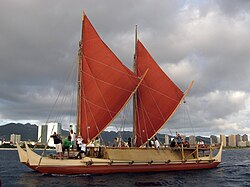References
- ↑ "Traditional Boats in Batanes". International Information and Networking Centre for Intangible Cultural Heritage in the Asia-Pacific Region (ICHCAP). UNESCO. Retrieved 29 October 2019.[ permanent dead link ]
- ↑ Gabilo, Marlu C. (2010). Traditional Boats in Batanes (PDF). ICHCAP, UNESCO.[ permanent dead link ]
| Commercial | ||
|---|---|---|
| Traditional |
| |
| Dories | ||
| Oyster boats | ||
| Recreational | ||
| Builders and designers | ||





